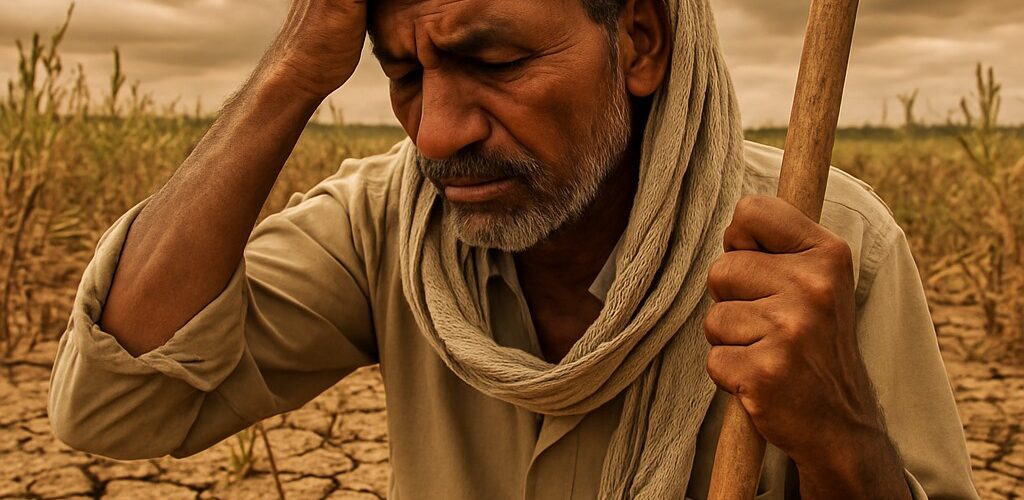Introduction
Pakistan is an agricultural country, with its economy, food supply, employment,
and exports heavily dependent on agriculture. Nearly 65% of the population is
directly or indirectly connected to this sector, which contributes about 19–20% to
the national GDP.
However, in recent decades, climate change has posed serious threats to this
lifeline.
Shifting seasons, rising temperatures, water scarcity, floods, droughts, and
unpredictable rainfall have left Pakistan’s once-fertile lands distressed. This is no
longer just a farmer’s concern — it’s a question for the entire nation:
Can we save our land, our agriculture, and our food security?
Current Climate Crisis in Pakistan:
Pakistan is among the top 10 countries most vulnerable to climate change, despite
contributing only about 0.8% to global carbon emissions.
Rising Temperatures:
Over the past 70 years, Pakistan’s average temperature has increased by 1.1°C.
Climate experts warn that, if this trend continues, temperatures may rise by 2.5°C
by 2050, which would be devastating for agriculture.
Unpredictable Rainfall:
Rain patterns have become erratic — sometimes there’s barely any rain, and other
times sudden, intense downpours damage or destroy crops.
Regions like Balochistan and Thar face frequent droughts, while Punjab and Sindh
are increasingly affected by floods.
Floods and Extreme Weather:
The floods of 2010 and 2022 were among the worst in Pakistan’s history,
devastating millions of acres of standing crops.
The 2022 floods alone affected around 3.2 million hectares of agricultural land,
causing billions of rupees in losses to crops like cotton, rice, and sugarcane.
Water Crisis:
Pakistan is now one of the most water-scarce countries in the world, with per
capita water availability reduced to about 900 cubic meters, far below the UN
defined water scarcity threshold of 1,700 cubic meters.
The Indus River, the lifeline of Pakistan’s agriculture, is now unstable due to
melting glaciers and disrupted monsoon patterns.
Impact of Climate Change on Agriculture
Decline in Crop Yields:
Major crops like wheat, rice, cotton, maize, and sugarcane are suffering due to
extreme weather conditions.
In 2023, cotton production dropped by 35%, severely impacting Pakistan’s textile
exports.
Food Shortages and Price Hikes:
Reduced crop output and a disrupted supply chain have caused prices of essentials
like flour, vegetables, and pulses to skyrocket.
What Can Be Done? (Pathways to Survival)
Climate-Smart Agricultural Policies:
Adopt water-saving methods such as drip irrigation and sprinkler systems to reduce
wastage and improve efficiency.
Policy Reforms and Government Responsibility:
Implement crop insurance schemes to protect farmers from climate-related losses.
Provide subsidies and accessible loans to farmers.
Establish agricultural research centers focused on climate-resilient farming.
Strengthen provincial agriculture departments to better support local farmers.
Global Cooperation:
Seek funding and technical support from organizations like UNDP, FAO, and the
Green Climate Fund.
Honor commitments made under the Paris Agreement to combat global warming.
Pakistan’s agriculture is facing a deepening crisis due to worsening environmental
conditions. If we ignore the cries of the land today, tomorrow we may face severe
shortages of food, water, and employment.
This is no longer the time to just think — it’s time to act. We must embrace modern
science, stronger policies, and climate-compatible agricultural practices.
The survival of agriculture is the foundation of Pakistan’s economy, self-reliance,
and the well-being of future generations. Saving the land means preserving our
identity.
